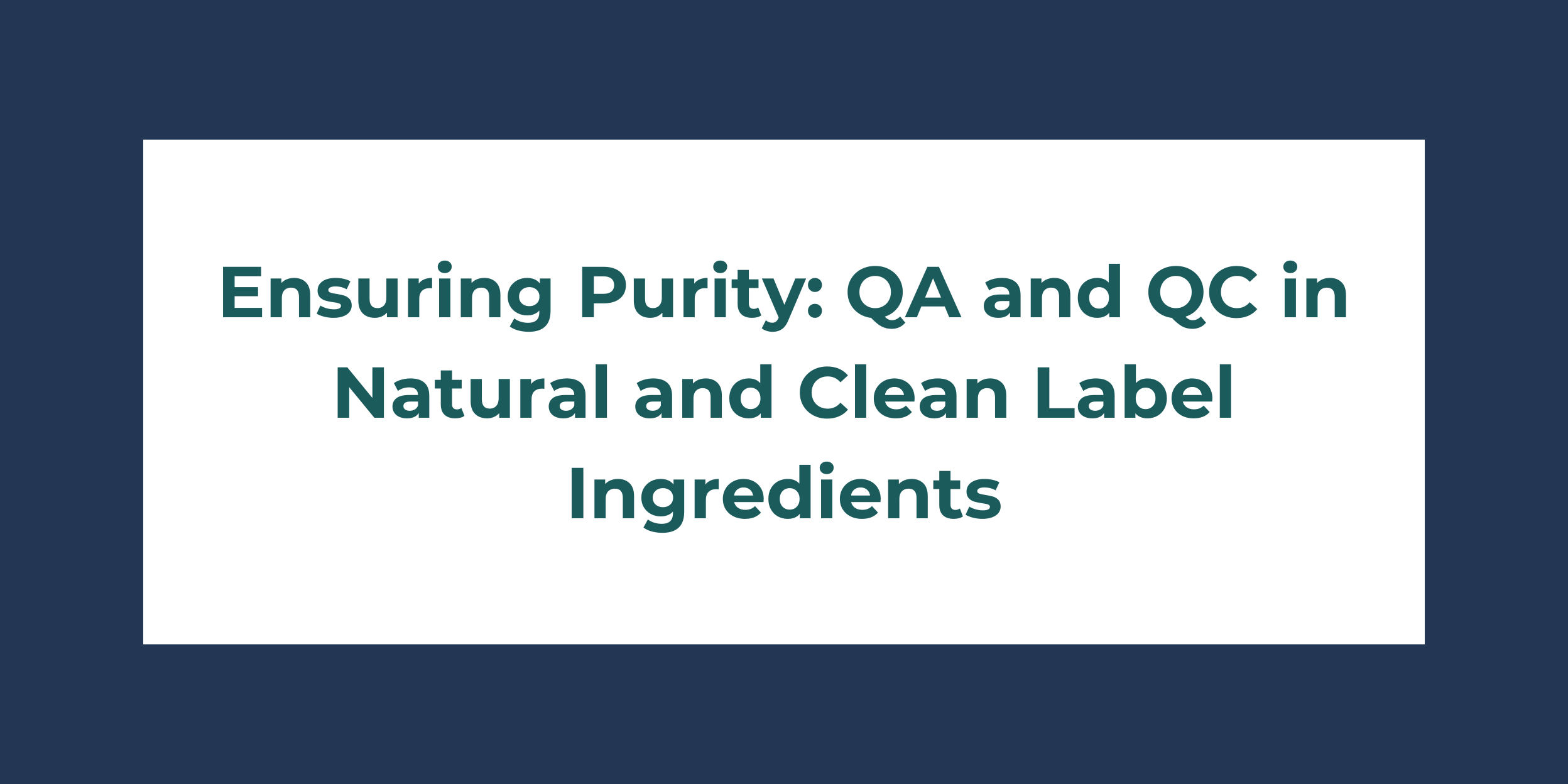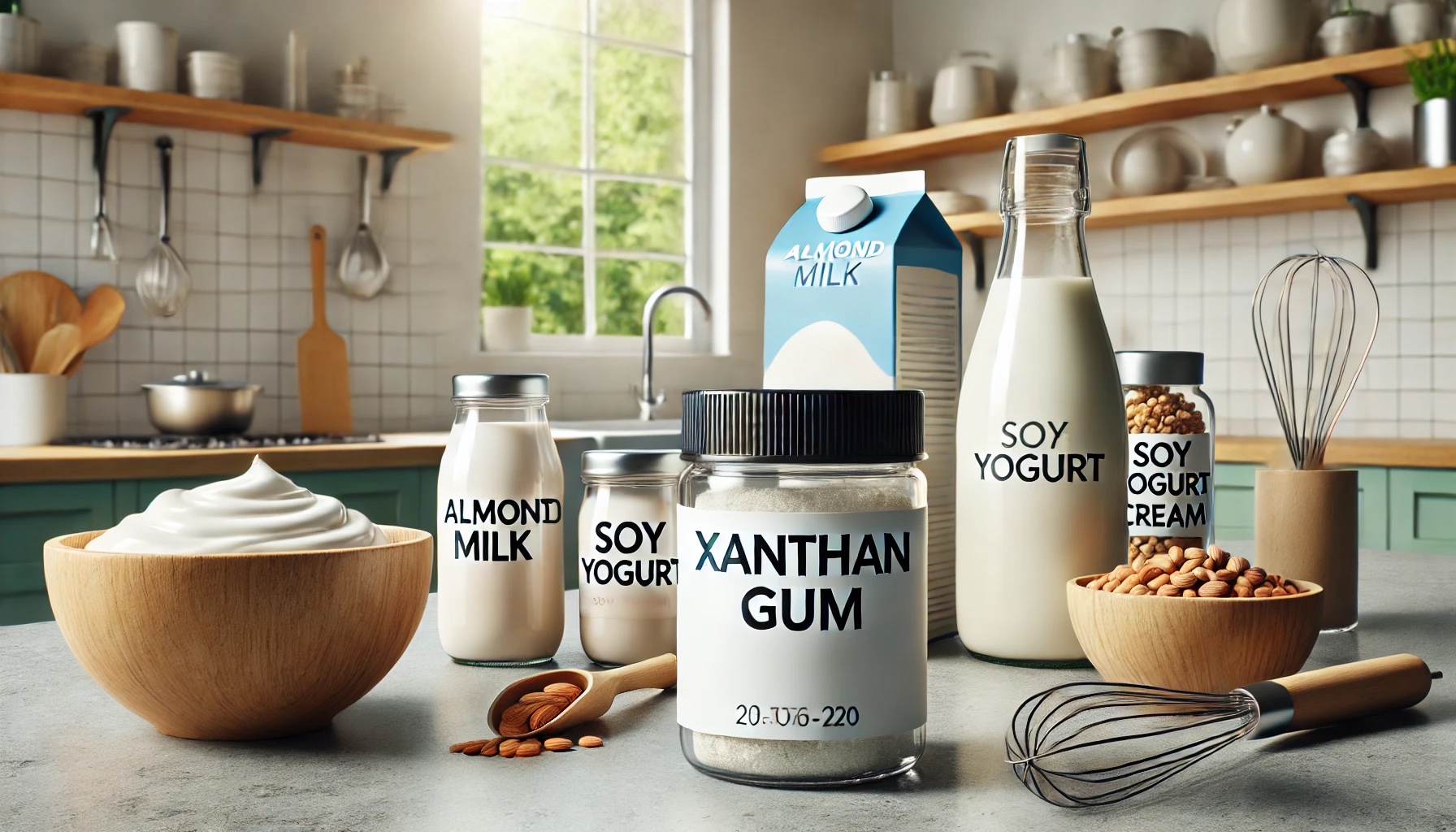In the rapidly growing food industry, consumer perceptions are shifting to healthier clean labels and natural ingredients.
This shift necessitates stringent quality assurance (QA) and quality control (QC) measures to ensure product purity and safety.
In this blog, we will explore the importance of QA and QC in the natural and clean label ingredient sector, the processes involved, and the benefits of rigorous quality management systems.
Introduction
The Rise of Natural and Clean Label Ingredients
- Consumer Demand: A growing number of consumers are prioritizing health and wellness, leading to increased demand for products with natural and clean label ingredients.
- Industry Response: Food manufacturers are adapting to this trend by incorporating such ingredients, necessitating robust QA and QC measures to maintain product integrity.
The Importance of QA and QC in Natural Ingredients
Ensuring Ingredient Purity
- Defining Purity: Purity in the context of natural ingredients refers to the absence of contaminants and the presence of only the intended ingredient without adulteration.
- Consumer Trust: High purity levels are crucial for maintaining consumer trust and brand reputation.
Regulatory Compliance
- Global Standards: Different countries have varying standards and regulations for natural and clean label ingredients.
- Meeting Requirements: Ensuring compliance with these standards is a critical aspect of QA and QC.
QA and QC Processes
Quality Assurance (QA)
- Supplier Qualification
- Choosing the Right Suppliers: Vetting suppliers to ensure they meet high-quality standards.
- Audits and Certifications: Conducting regular audits and verifying certifications such as Organic, Non-GMO, and others.
- Raw Material Testing
- Initial Testing: Conducting comprehensive testing of raw materials upon receipt.
- Ongoing Monitoring: Regular testing throughout the production process to detect any deviations.
Quality Control (QC)
- In-Process Control
- Continuous Monitoring: Implementing real-time monitoring systems to ensure consistency during production.
- Process Adjustments: Making necessary adjustments based on monitoring data to maintain quality.
- Final Product Testing
- Batch Testing: Testing final product batches to ensure they meet the required specifications.
- Release Protocols: Only releasing products that pass stringent QC tests.
Advanced QA and QC Techniques
Analytical Testing Methods
- Chromatography and Spectroscopy: Using advanced techniques like HPLC (High-Performance Liquid Chromatography) and MS (Mass Spectrometry) for precise ingredient analysis.
- Microbiological Testing: Ensuring products are free from harmful microorganisms through rigorous testing protocols.
Traceability Systems
- Blockchain Technology: Utilizing blockchain for enhanced transparency and traceability in the supply chain.
- Digital Records: Maintaining digital records of each batch for accountability and trace-back purposes.
Challenges in QA and QC for Natural Ingredients
Variability in Raw Materials
- Natural Variations: Addressing the inherent variability in natural ingredients due to factors like weather, soil conditions, and farming practices.
- Standardisation Efforts: Implementing strategies to standardise raw materials as much as possible.
Avoiding Contaminants
- Environmental Contaminants: Managing the risk of contamination from pesticides, heavy metals, and other environmental factors.
- Cross-Contamination: Preventing cross-contamination during processing and handling.
The Benefits of Rigorous QA and QC
Enhanced Product Safety
- Consumer Health: Ensuring that natural ingredients are safe for consumption.
- Risk Mitigation: Reducing the risk of recalls and legal issues through proactive quality management.
Building Consumer Confidence
- Transparency and Trust: Providing consumers with confidence in the safety and quality of natural and clean label products.
- Brand Loyalty: Fostering brand loyalty through consistent delivery of high-quality products.
Conclusion
The importance of QA and QC in the natural and clean label ingredient sector cannot be overstated.
As consumer demand for transparency and purity continues to rise, food manufacturers must implement and maintain rigorous quality management systems.
By ensuring ingredient purity, regulatory compliance, and leveraging advanced testing techniques, companies can not only meet but exceed end user expectations.
This commitment to quality not only enhances product safety but also builds lasting consumer trust and brand loyalty.
In a market that increasingly values natural and clean label ingredients, robust QA and QC processes are not just beneficial—they are essential.








